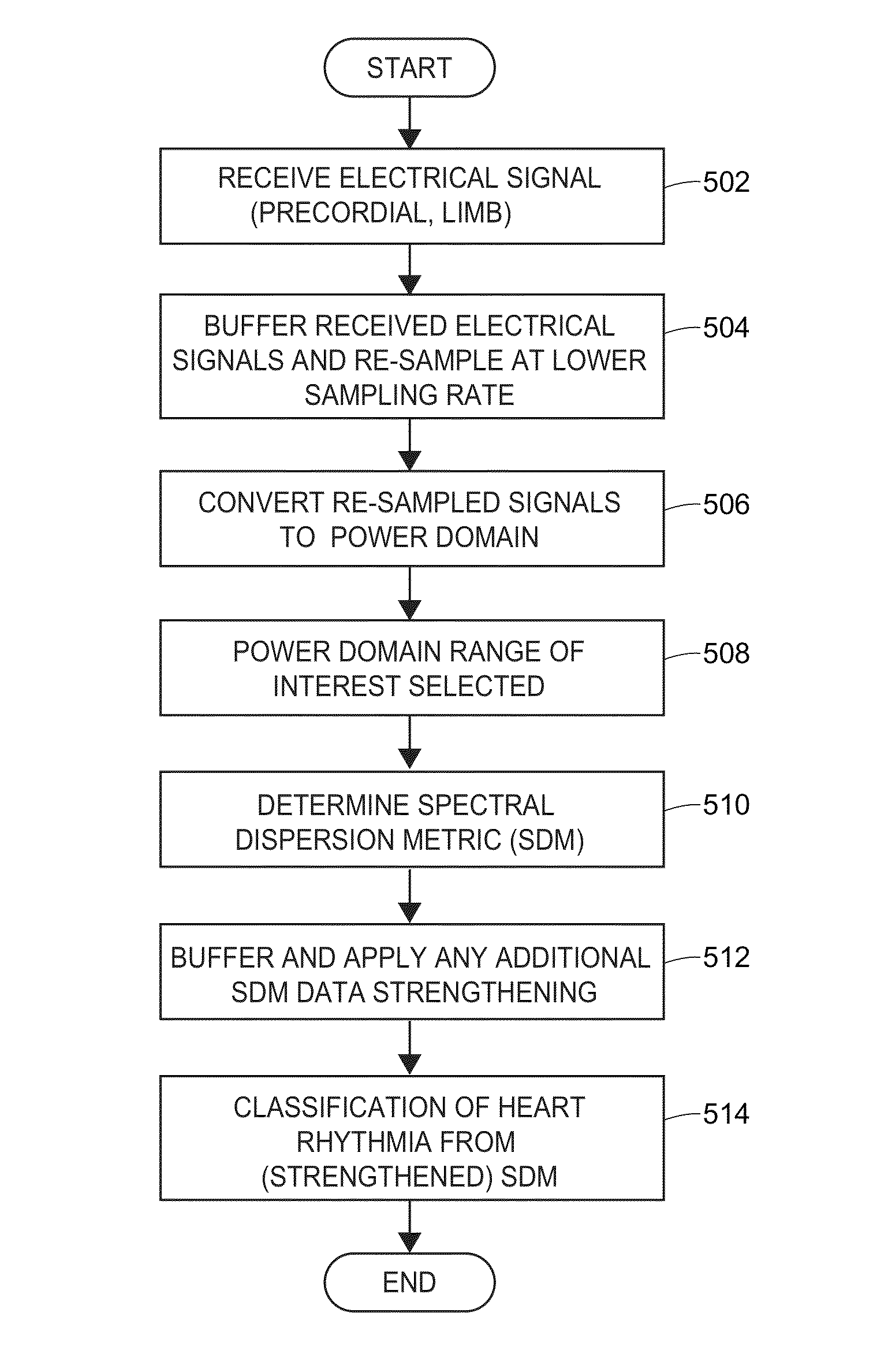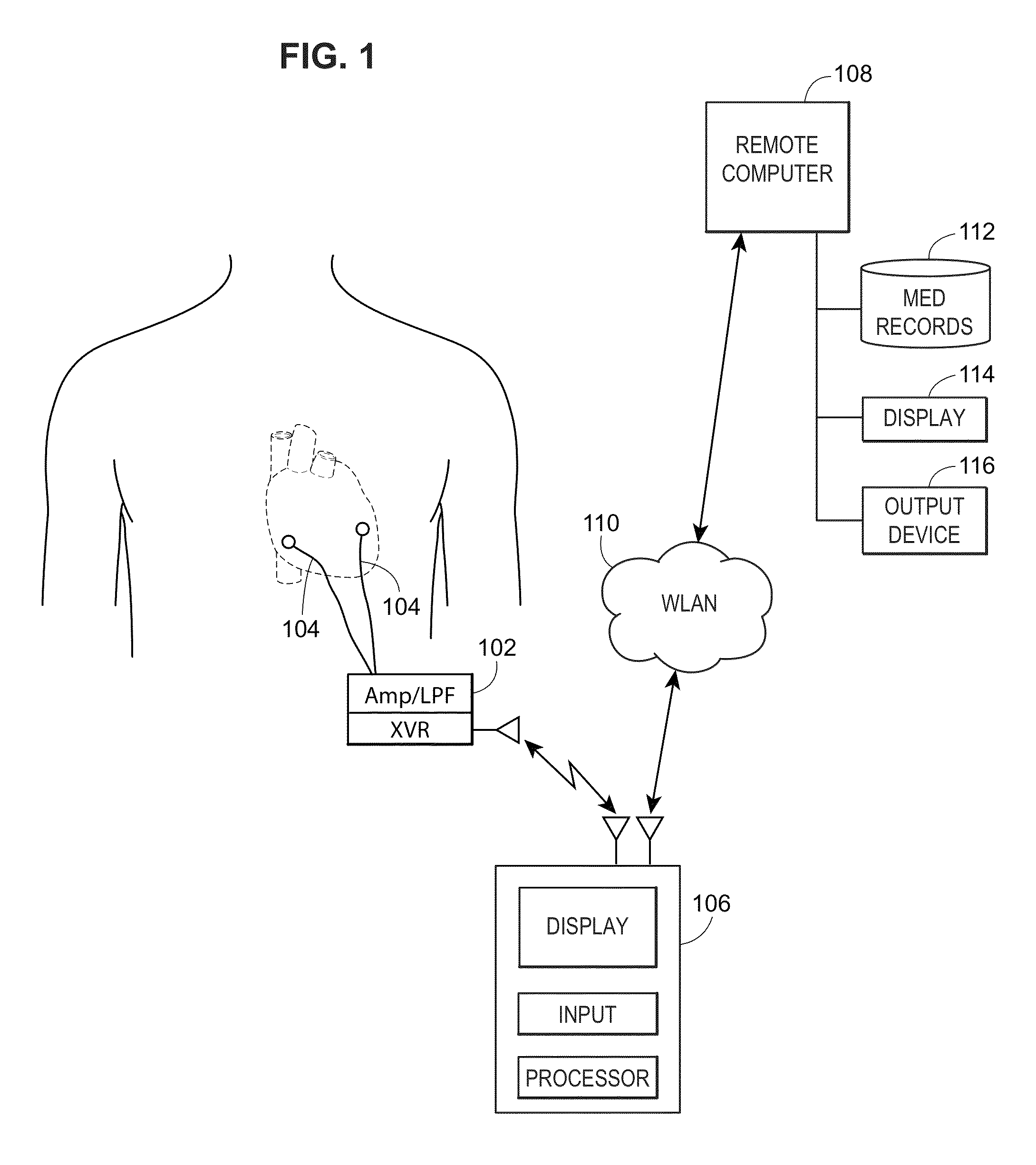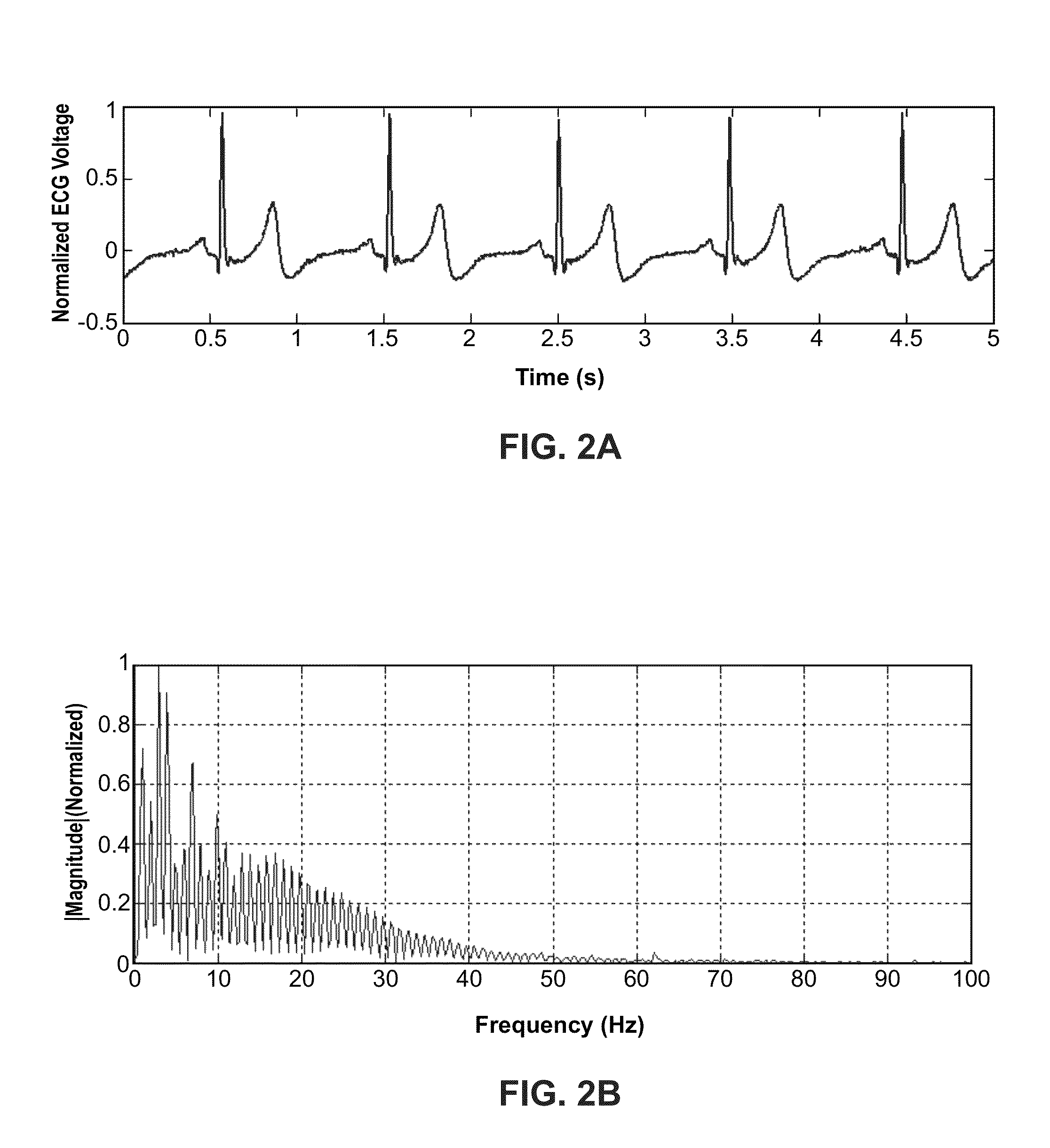Atrial fibrillation classification using power measurement
a technology of power measurement and atrial fibrillation, which is applied in the field of identifying heart rhythm state, can solve the problems of ineffective pumping of blood into the ventricle, lack of synchrony, and increased risk of blood clot formation
- Summary
- Abstract
- Description
- Claims
- Application Information
AI Technical Summary
Benefits of technology
Problems solved by technology
Method used
Image
Examples
Embodiment Construction
[0003]This invention was made with government support under HL039707 awarded by the National Institutes of Health. The Government has certain rights in the invention.
BACKGROUND
[0004]The background description provided herein is for the purpose of generally presenting the context of the disclosure. Work of the presently named inventors, to the extent it is described in this background section, as well as aspects of the description that may not otherwise qualify as prior art at the time of filing, are neither expressly nor impliedly admitted as prior art against the present disclosure.
[0005]Atrial fibrillation is a form of cardiac arrhythmia where there is disorganized electrical conduction in the atria causing rapid uncoordinated depolarizations that result in ineffective pumping of blood into the ventricle and a lack of synchrony. During atrial fibrillation, the atrioventricular node receives electrical impulses from numerous locations throughout the atria instead of only from the s...
PUM
 Login to View More
Login to View More Abstract
Description
Claims
Application Information
 Login to View More
Login to View More - R&D
- Intellectual Property
- Life Sciences
- Materials
- Tech Scout
- Unparalleled Data Quality
- Higher Quality Content
- 60% Fewer Hallucinations
Browse by: Latest US Patents, China's latest patents, Technical Efficacy Thesaurus, Application Domain, Technology Topic, Popular Technical Reports.
© 2025 PatSnap. All rights reserved.Legal|Privacy policy|Modern Slavery Act Transparency Statement|Sitemap|About US| Contact US: help@patsnap.com



